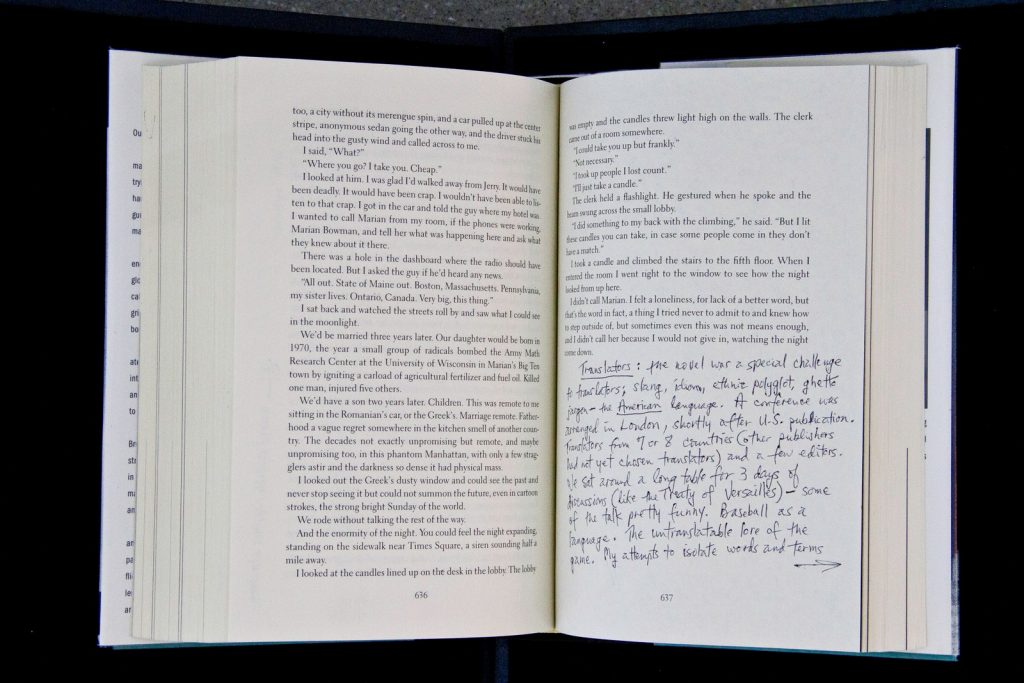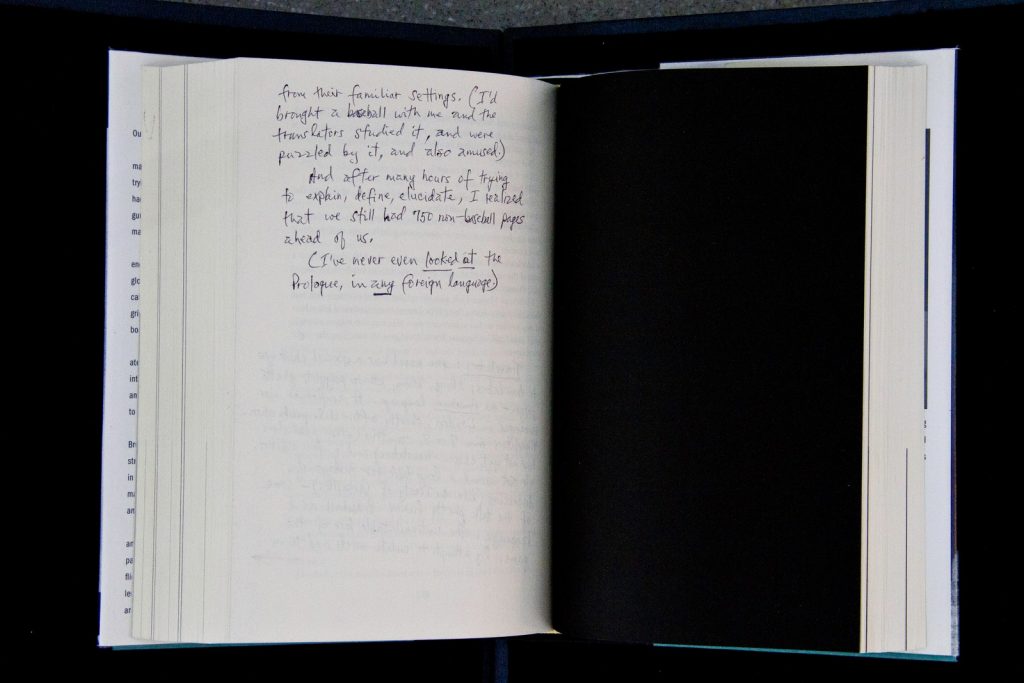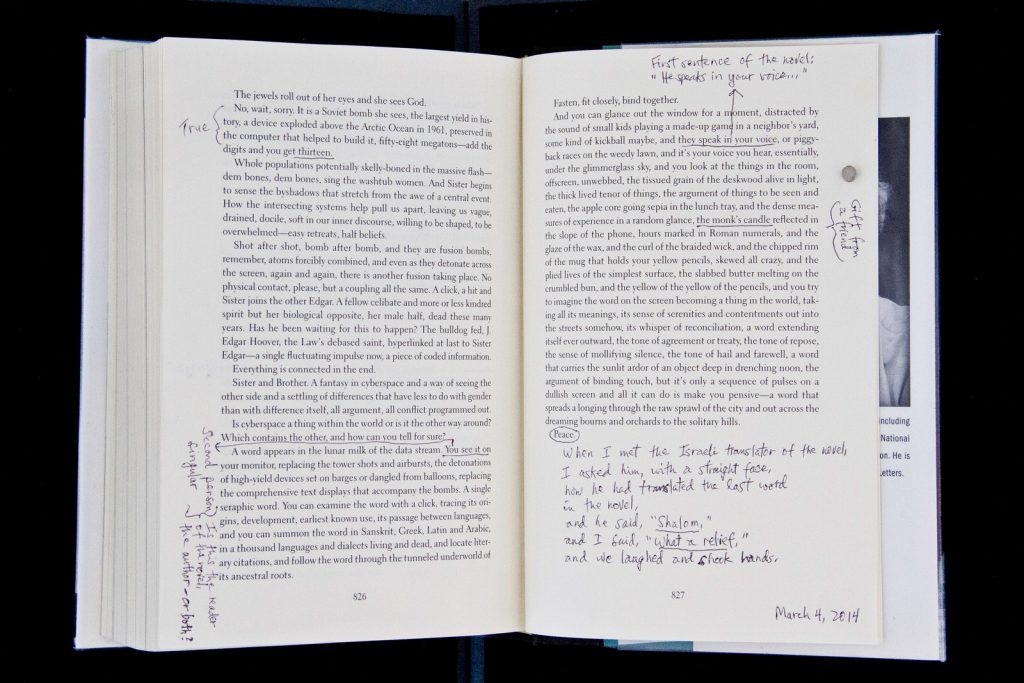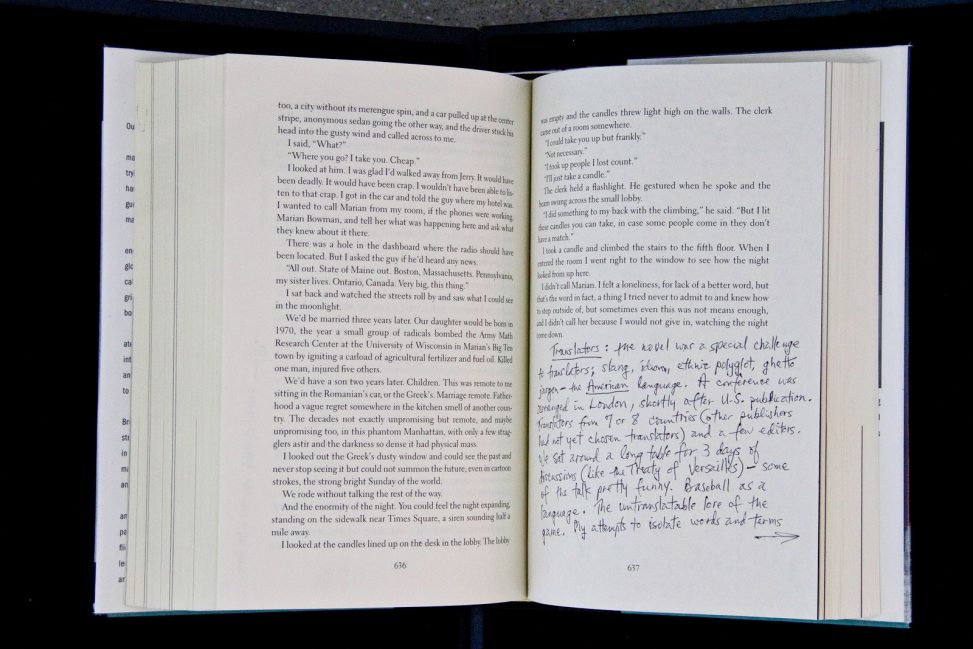From Rewiring the Real by Mark C. Taylor:
191:
People, things, and events proliferate in narratives and counternarratives that simultaneously connect and disconnect, until everything becomes somewhat chaotic. The only thing that seems to tie it all together is waste. With every turn of the page, there is more waste – wasted lives, wastebands, wasted bodies, limbs, sewers, dumps, landfills, junk, trash, garbage, shit – all kinds of shit – and, of course, radioactive nuclear waste. There are also other less recognizable and predictable forms of waste – games, art, and religion.
195:
Underworld is big – too big – and messy. By any reasonable measure, it is excessive – 827 pages! It seems to fall apart more often than hang together.
196:
As pages turn and stuff keeps piling up, readers are left to sort through the historical and cultural debris of the latter half of the twentieth century in the hope of finding patterns where there seems to be nothing but noise.
199:
The temporal organization of Underworld is as complex as its spatial structure. DeLillo’s counternarrative is not straightforward but consists of multiple narratives and counternarratives joined by tangled loop-lines. The events he recounts all take place during the four decades from the summers of 1951 and 1952 and the summer-spring of 1992.
201:
It is too easy to set up a simple opposition between a modernist utopia and a postmodernist dystopia because the liminal spaces Delillo explores are too complex to be contained by such sharp boundaries.
From Underworld as cited in Ticonovic (2000):
82:
I lived responsibly in the real. I didn’t accept life as fiction, or whatever Klara Sax had meant when she said that things had become unreal. History was not a matter of missing minutes on tape. I did not stand helpless before it. I hewed to the texture of collected knowledge, took faith from the solid and availing stuff of our experience. Even if we believe that history is a workwheel powered by human blood – read the speeches of Mussolini – at least we’ve known the thing together. A single narrative sweep, not ten thousand wisps of disinformation.




Leave a Reply